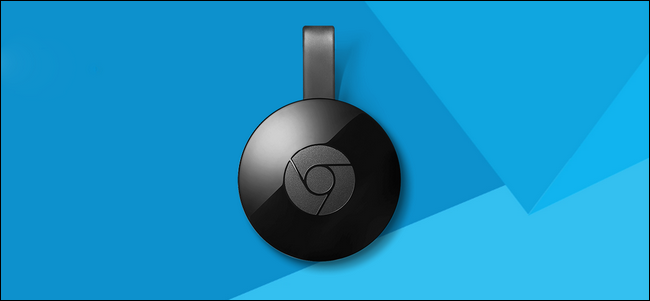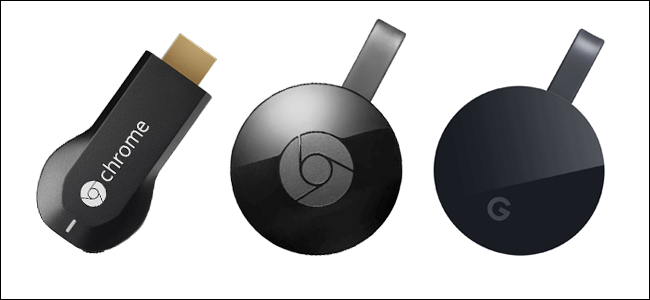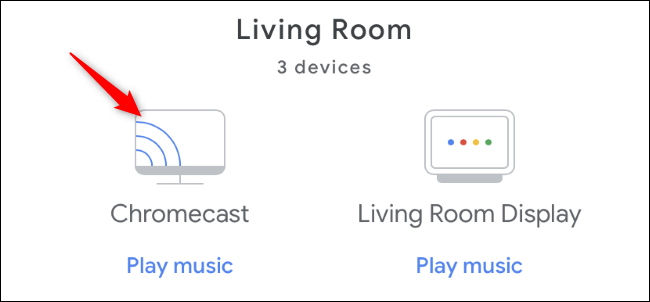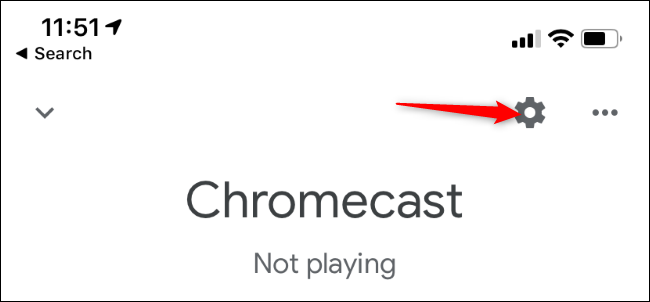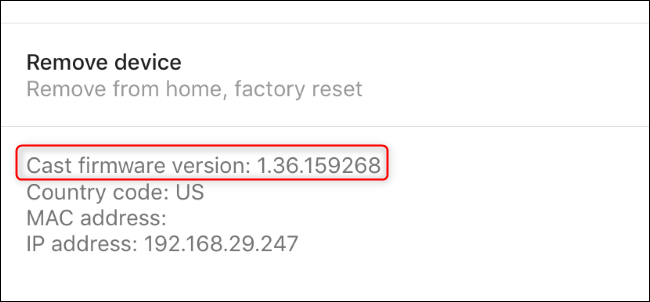Quick Links
Google launched the first-generation Chromecast back in 2013, and it's still getting security updates---but that's it. As Google confirmed to 9To5Google, this original Chromecast won't get new features. It may be time to upgrade if you have an old one.
Checking whether you have a first-generation Chromecast is simple. You can either look at the Chromecast hardware itself or pull up the Google Home app on your smartphone.
Check Your Chromecast's Generation By Looking at It
If you don't remember off the top of your head, just peek behind your TV and see which one is plugged into your TV's HDMI port.
The first generation Chromecast was more of a stick with a rounded end, while second generation and newer Chromecasts are a full circle.
In the photo below, the Chromecast on the left is a first-generation Chromecast. If your Chromecast looks like the one on the left and not the ones to the right, you have an older Chromecast that's only receiving security updates and not new features.
Find Your Chromecast's Version From Your Phone
You can also check via the Google Home app on your mobile device. Make sure your phone or tablet is connected to the same Wi-Fi network your Chromecast is using and then open the Google Home app for Android, iPhone, or iPad.
Tap the Chromecast you want to find the version of.
Tap the gear-shaped Settings icon at the top-right corner of the screen.
Scroll down to the bottom of this screen and look at the "Cast firmware version" number at the bottom of the screen.
If it's 1.36, you're using a first-generation Chromecast. If it's 1.40 or newer, you're using a second-generation or newer Chromecast. You can check the most recent firmware versions associated with each Chromecast on Google's Chromecast firmware versions web page.
Should You Upgrade Your Old Chromecast?
If you're using a first-generation Chromecast, upgrading might be a good idea. Not only will new Chromecasts receive new software features, but they also have improved hardware.
For example, the first-generation Chromecast is only compatible with 2.4 GHz Wi-Fi networks, while all other Chromecasts are compatible with both 2.4 GHz and 5 GHz Wi-Fi networks. The second-generation Chromecast added support for 802.11ac Wi-Fi, too. The Chromecast Ultra models offer 4K support and are the only Chromecasts compatible with Google's upcoming Stadia game-streaming service. The third-generation Chromecast doesn't offer 4K but can play 1080p video at up to 60 FPS (frames per second). First and second-generation Chromecasts only support 30 FPS playback of 1080p video.
They're still cheap, too. The original first-generation Chromecast launched at $35 in 2013, and the third-generation Chromecast is still available for $35. If you want a Chromecast Ultra, that'll cost you $59 instead.
But do you really need to upgrade? Not necessarily. If you're happy with your Chromecast and it works for you, it's not like there's a security risk---you're still getting security updates. Google told 9To5Mac that the company would "continue to update it with bug and security fixes." Just don't expect to get features like speaker groups without buying new hardware in the future.

